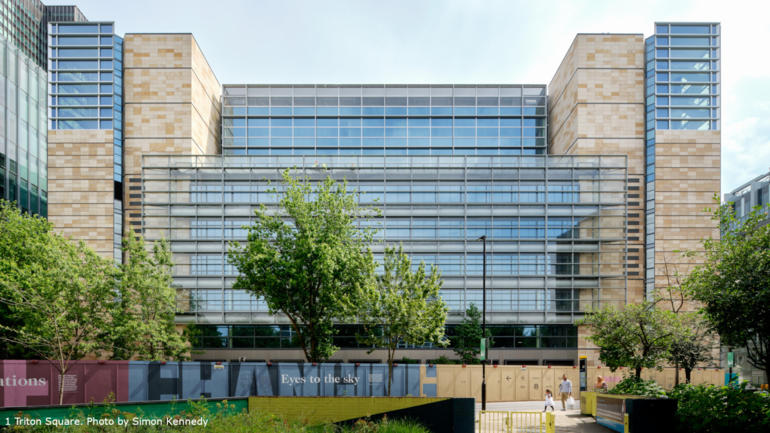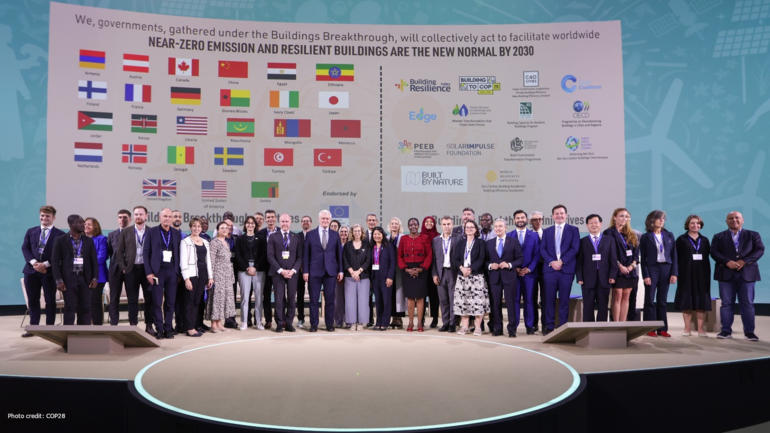Geneva, 13 October 2022 - The circular economy represents a tremendous opportunity for business. Unlocking that potential and exploring how to gain business and climate benefits from going circular were the focus of the seventh session of the Masterclass Series “The Fundamentals of Decarbonization” by the World Business Council for Sustainable Development (WBCSD).
Nearly 70 participants from over 30 members joined this interactive session. We welcomed top experts in the field, including Robert Westerdahl, Partner at McKinsey & Company and co-founder at Material Economics, who shared his insights on unlocking the business opportunity in circularity. Suzanne Kuiper, Manager Sustainability at KPMG and co-author of WBCSD’s Circular Transition Indicators (CTI), shared how the CTI framework helps companies connect their circular economy actions with decarbonization. Finally, Harald Tepper, Senior Director Group Sustainability and Global Lead Circular Economy EcoDesign and ESG Transformation at Philips, presented how Philips is turning decarbonization and circular economy challenges into opportunities.
Here are 5 key takeaways from our “Fundamentals of Decarbonization” Masterclass:
1. Applying circular economy principles significantly reduces greenhouse gas (GHG) emissions
Circular economy plays an essential role in tackling the climate emergency, yet its full decarbonization potential is far from realized. The pathway to a low-carbon system includes an urgent energy transition but also a transformation in the way we use materials, as 45% of emissions arise from how we make and use products and food. Furthermore, the critical materials demanded for the energy transition can only be supplied in the context of a circular economy. This demonstrates the importance of propelling beyond material efficiency strategies into a systemic transformation.
2. A “linear mindset” and fragmentation are among the biggest challenges to circular decarbonization
According to McKinsey & Company, businesses can reduce emissions through circular economy strategies centered around three pillars: materials recirculation, product material efficiency and circular business models. These three pillars hold an emission reduction potential in the EU of 56% compared to a baseline scenario. Some possible actions in line with the pillars are high-value recycling, reuse of components, higher utilization, dematerialization and increased lifespan through maintenance or remanufacturing. These actions avoid a high amount of value leakage that can occur due to losses in volume (if end-of-life materials are not recycled and reused) or losses in price (associated with quality losses).
However, the discussion during the Masterclass uncovered several challenges experienced by companies when implementing circularity. The prevalence of a linear mindset, a myriad of metrics and a lack of mature, sustainable procurement are some of the challenges causing companies to have difficulty prioritizing actions. Furthermore, the fragmented ownership of the value chain, as well as the quest for higher-quality, safety-compliant recycled materials, and the logistical challenges, given a highly distributed source of used materials, were also concerns expressed by members.
3. Measurement and innovation are crucial leavers
Philips has been reporting its total environmental impact, since 2017, in an Environmental Profit and Loss (P&L) account, briefly presented in the Masterclass. Given that the biggest share of the company’s overall environmental impact lies in the customer use phase, the company has, with its EcoDesign program, focused a lot on increasing the energy efficiency of its products. Going deeper on a business unit (BU) level, the relative contribution of CO2 emissions from production, materials, and supply chain to the Environmental P&L, varies per BU. Especially with larger equipment, the material component is bigger. In those cases, Circular Economy can be a key lever to drive down those emissions. Some of the most relevant Circular Economy principles used by Philips are dematerialization, circular customer solutions, designing for circularity, providing upgrades and lifetime extension, taking equipment back for refurbishment, and driving circular materials management in their own operations and with recyclers.
4. The CTI framework supports companies measuring and steering toward circularity
WBCSD’s Circular Transition Indicators framework measures several indicators relevant to decarbonization, including GHG impact of moving from linear to circular businesses. It takes a continuous improvement approach that allows companies to find and prioritize opportunities based on where the largest impact is. You can learn more on how to assess your company’s circularity Circular Transition Indicators v3.0 – Metrics for business, by business
5. Capacity building, partnerships and regulatory changes are key
There is a consensus around the need for organizational and capacity building. Taping into this potential will certainly require partnerships, coalitions, and potentially (vertical) business integrations, either upstream or downstream, to guarantee an optimal exchange of materials. There is also a clear need for enabling policy that creates the necessary incentives for a truly circular economy.
For any questions on the Masterclass series, please reach out to sos15@wbcsd.org.








